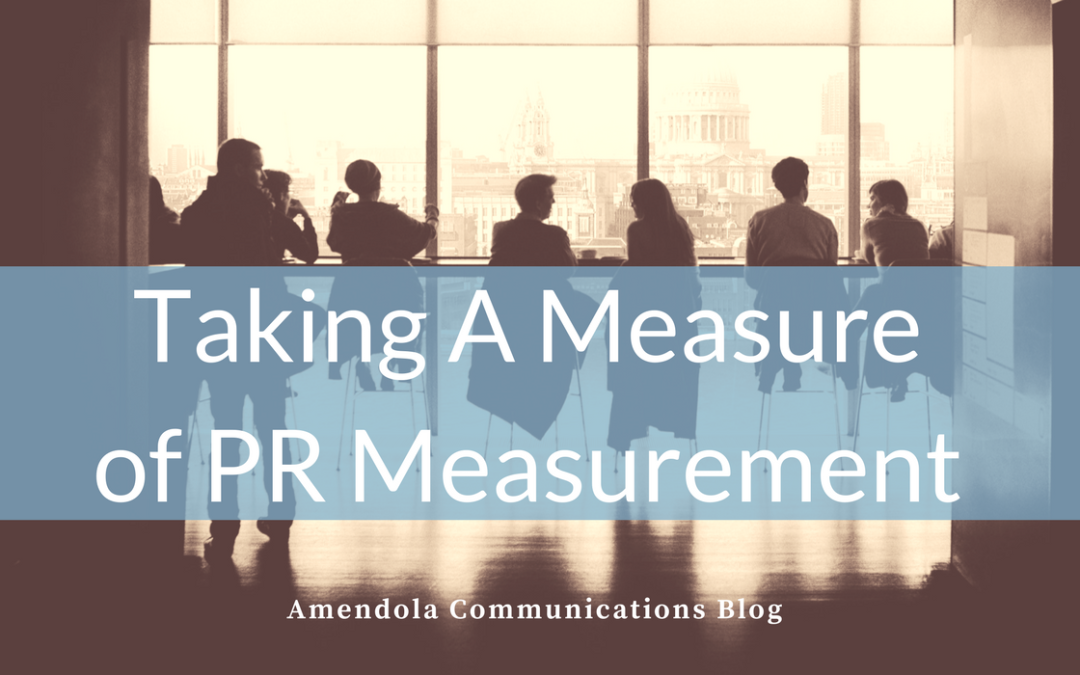
by Lisa Chernikoff | Jun 21, 2017 | Blog
Here’s a valuable lesson for anyone involved in content marketing.Recently, I was chatting with a small group of guests at a party. Then, the other partygoers gracefully exited the conversation and suddenly, I was trapped. I looked right. I looked left. But my efforts were futile. I was officially stuck in a never-ending conversation. Yes, I had entered the dreaded Party Vortex, which is similar to the Polar Vortex but much less cold and much more dangerous.
But the real problem, and what made the circumstances so precarious, is that the never-ending conversation wasn’t a conversation at all. It was a monologue without audience participation. It was a soliloquy but far less articulate. It was all about my new acquaintance, who would most certainly not make the cut to be called a friend. As he continued to talk at me for 20 minutes, which felt like 20 hours, I smiled and nodded but secretly plotted my escape. Yet, despite my best Party Ninja skills, there was no way.
Spoiler alert: I survived this party trauma and lived to tell the tale. But sadly, this blog is not about party etiquette. It’s about content marketing because my Party Vortex nightmare is undeniably similar to the experience that potential customers might be having with your content right now.
While content marketing missteps are many and frequent, the biggest, most overarching mistake is that your content is all about you. It’s all about your company and your solutions. It’s all about your technology saving the world. This is the sort of content that not so subtly shouts “buy this.” After all, isn’t that your end goal?
However, touting the features and functionality of your newest product under the guise of a white paper often fails to make an impact especially as healthcare professionals becomes savvier to the idea that they’re being sold to everyday. It falls short because it doesn’t take readers, your potential customers, into account. It doesn’t address what readers really want to know and what will compel them to take action. It leaves readers hanging, and then what happens?
Rather than completing a “contact us form” on your website to learn more, they’re lost to you. They may have simply decided that it’s not the right time to buy or that your company isn’t the right partner. They may have even gasp moved on to one of your competitors.
From company-focused to customer-focused
When developing a content marketing strategy and crafting each piece of content to support that plan, it’s critical to keep your future customers top-of-mind. Remember that every decision-maker or influencer that engages with your content could be your newest client, smartest super user, or most reliable reference.
How can you better connect with your audience? It’s simple but shockingly hard to do. Write what they want to hear about, rather than writing what you want to say. Write what they are hungry to learn about, rather than what you’re desperate to teach them. It’s a small change in perspective that makes a big difference. And while that may seem obvious, it’s not abundantly clear to many marketing and PR professionals unless they’re just doing it wrong.
Effective, customer-focused content prompts an “aha moment,” by sharing new ideas or even the same old ideas in a new way. This matters because encouraging readers to think differently is the first step to being seen as a thought leader in their minds and then as the ideal strategic partner.
These new perspectives aren’t necessarily earth-shattering but they draw readers in. Customer-focused content addresses the problem you’re solving, not just the solution.
It also doesn’t oversimplify the solution by presenting painless and perfect success stories of IT solutions that were seamlessly implemented and quickly gained adoption by all end users. Further, it provides insights on process improvements, change management, and other tactics that readers can put into action, aside from just buying your technology.
Real-world tips and lessons learned are valuable takeaways that readers appreciate much more than a bulleted list of your product’s bells and whistles.
Your new customer-focused content will not only satisfy readers but also help turn more potential customers into actual ones. Even more importantly, we know that your new, improved content will ensure that you’re invited back to the party. And isn’t being invited back to the party the ultimate goal of any marketing?

by Ken Krause | Jun 14, 2017 | Blog
So there you are, listening to the PR agencies you’ve brought in to pitch your business. Everything is going swimmingly, and you think you’ve found your top candidate. Then you do it ask the one question that strikes fear into the heart of nearly every PR professional: what sort of PR measurement tools will you use to measure success?
At that point the air gets thick, and suddenly the only sound in what was once a room filled with lively discussion is the steady whirring of the HVAC system in the background.
It’s not that PR people are afraid to be measured on their accomplishments. It’s just that they’ve been down this road enough times to know that’s not really the question that’s being asked. The actual question is more along the lines of “How will you prove your campaign was solely responsible for improving our sales?” That goes double if it’s the VP of Sales who asked the question.
While it would be awesome if you could do it, tying PR to sales isn’t really a fair measure of the effectiveness of the campaign. That’s not just me saying that.
A few weeks ago I attended a webinar led by PR measurement guru Katie Delahaye Paine where she discussed this topic. The analogy she used was a PR campaign to sell cars. If the campaign succeeds in driving 100 people to the showroom but no cars are sold, would you say the campaign failed? Doubtful.
There could be all kinds of reasons the cars weren’t sold. Maybe the showroom never opened. Maybe the salespeople were rude or incompetent. Maybe prospects went for a test drive and discovered the interior noise level was somewhere between “WWII-era Sherman tank” and “jet engine.” Maybe everyone wanted a yellow car and it didn’t come in yellow. You get the idea.
Whatever the reason, it’s not because the PR campaign didn’t do its job. The people came. They just didn’t like what they found once they got there.
The stakes go up with HIT
When you’re talking about health IT (HIT) products or services it gets even more difficult to attribute a sale directly to the PR campaign. First of all, the average HIT offering costs many times more than a car. Would you buy a car based on what you read in a press release, or a byline article, or even a white paper?
Highly unlikely. Once you became aware of the car you’d probably want to research it on the Internet see what professional reviewers say as well as people who already own that vehicle. You’d want to compare it to other models. You’d want to kick the tires (even though that’s completely pointless) and take it for a test drive. Cars cost too much money, and most of us keep them for too long, to just purchase one based on the PR campaign.
So why would anyone purchase an expensive HIT product or service their business depends on, and that they’ll probably have to live with for a few years, based solely on a PR campaign?
The answer, quite frankly, is they wouldn’t. Most things in HIT are considered purchases that require many exposures and steps before the decision is made. The PR campaign will be useful in creating awareness, and a good content program will help walk the prospect through the decision-making process.
But at the end of that cycle, which could take several months or even a year or two, it will be very difficult to suss out exactly how much PR contributed to the sales that do happen. Not to mention virtually impossible to determine how many sales didn’t occur due to some issue that had nothing to do with the quality or effectiveness of the PR campaign.
There is an exception, at least for online sales. Google Analytics does have a pretty sophisticated way of tracking the lifecycle of a sale. Rather than simply relying on the last click, the analytics can associate all the activities of individual users together to provide a history of all their clicks, including their entry point off a PR campaign. That, however, takes some pretty sophisticated work performed by outside specialists. Given that purchasing HIT products and services is a team sport, you have to determine whether it’s worth the time and effort to attribute those sales to PR.
Oh, and as far as ad equivalencies go, don’t bother. Calculating the cost of purchasing the same space versus getting it “free” from PR pretty much went out with parachute pants and giant boom boxes.
What you can measure
Ok, if that doesn’t work for measuring PR, what does?
One good measure is web traffic. The measurement can be overall web traffic, and/or spikes that occur around a PR campaign event such as a press release going out or content appearing in a media outlet or blog.
Measuring spikes in traffic is akin to the so-called “flush test” back in the early days of TV. Executives judged the popularity of Milton Berle’s program by the noticeable drop in water levels when the show went to commercial. Not exactly precise, but it does provide some indication your materials are causing prospects to take a positive action.
Another measure is downloads of your materials. These generally break into two categories the materials that can be freely downloaded, and gated content that requires visitors to give you their name and email address in order to complete the download.
Free downloads are good for gauging general interest among those considered “suspects,” i.e., the casual consumers of your materials. Those willing to go through the requirements to obtain the gated materials are your more serious prospects.
Many organizations like to measure “share of voice” within their markets. They want to see how much of the conversation around a given topic they own versus their competitors.
A simple form of this measurement is volume, as in how many press releases did we put out compared to our competitors? You can also break comparisons down around earned media (interviews, byline articles, product reviews, or anything that requires some effort on the part of the media outlet) and positive-negative-neutral coverage.
The latter generally isn’t a good measure in HIT because the coverage in general will almost always be positive. HIT media outlets are generally looking to inform their audiences about ideas, products, and services they can use, not tear them apart like the political media. In some rare instances, however, positive-negative-neutral can be relevant.
There are others as well. The key is to start by determining what is important to help your organization drive the activities that lead to sales, and then measure the success of those activities. For example, if you know that securing 50 sales at the end of the year requires 2,500 prospects to be deep in the sales funnel (downloading gated content, speaking with salespeople, etc.), and getting 2,500 prospects means you need 15,000 suspects downloading free content out of a total of 100,000 visitors to your website, you have a pretty good idea of how to measure success.
If you do all the other steps but miss the mark on the 50 sales, you’ll also know you either need to adjust your upstream figures, or you have a problem in closing the sale. Either way, you’ll have a pretty good idea of what your next steps should be.
Measure to inform
One of my other favorite things Katie Paine says is to only measure what you’re willing to change. There is no point in measuring the value of wearing pants if you will never not wear pants.
To make PR measurement work, you must understand the actions you’re trying to drive and be willing to change the program if it isn’t driving those actions. Once everyone understands the goals, and PR’s role in achieving them, you’ll know how to measure success.

by Marcia Rhodes | Jun 7, 2017 | Blog
“Story telling is the oldest form of teaching,” Matt Cavallo declared when we met on May 23. I couldn’t agree more. Great story telling has always intrigued me. Maybe that’s why I’m in PR. I have always believed that behind every organization is a zealous individual with an epic story waiting to be shared. It’s usually the CEO or founder, though not always.
Matt is a passionate patient advocate who dedicates his life to the fight against multiple sclerosis. He has been named among the top 10 Social HealthMakers by WCG and his blog was selected as one of Healthline’s top multiple sclerosis picks in 2015. His story of being diagnosed and overcoming the physical and emotional challenges associated with having a chronic disease can be read in his memoir, The Dog Story: A Journey into a New Life with Multiple Sclerosis.
What started as a simple half-hour meet-and-greet with Amendola Communications agency staff turned into a 90-minute conversation. Who has that kind of time, you ask? Well, Matt knew how to keep our attention: he had us laughing one moment and fighting back tears the next. It’s a skill few people have but many aspire to. This ability to connect comes in really handy during media interviews at large trade shows (such as HIMSS) where our PR clients (health IT vendors) get to pitch their product or solution to editors who decide on the spot whether they care enough to write about them or not.
GetWellNetwork founder and CEO Michael O’Neil was diagnosed with non-Hodgkin’s lymphoma at the age of 28. While the medical outcome was excellent, the patient experience was challenging. After four cycles of chemotherapy, he started GetWellNetwork to help hospitals improve performance and outcomes through patient engagement. Michael and his team work tirelessly to ensure the voice of the patient is heard. Today, more than 4.6 million patients use GetWellNetwork technology to engage in their healthcare. Take a minute to watch Michael tell his story in this short video.
Growing up in a family of doctors, ClearDATA CEO Darin Brannan got a firsthand look at the challenges healthcare practitioners face in treating patients using paper and outdated technology. It made him painfully aware of the number of people who die each day as a result of medical errors long before it became national news.
Despite the availability of electronic health records and other technologies that were supposed to solve the problem, reports show that more than 1,000 people still die each day due to medical errors. At the center of this seeming disconnect is a lack of cohesiveness among advanced information technologies. Darin believes that, “Healthcare is less of a science problem, it’s more of an information problem.”
In 2011, he co-founded ClearDATA to apply his cloud computing expertise to healthcare in order to remove the technical obstacles inhibiting patient safety and costing lives. Today, ClearDATA is recognized by organizations such as CB Insights as a leading healthcare information security services company, with $54 million in funding and a customer portfolio that includes some of the largest healthcare providers in the nation.
Dave Bennett, EVP, Orion Health, is passionate about precision medicine. He often tells the story about his son, Carter, who has cystic fibrosis (CF). Here is how he tells it.
Carter’s story
About a decade ago, my oldest son, Carter, was diagnosed with cystic fibrosis.
Like most kids with CF, Carter had a host of physical problems, like lung infections due to mucous build-up and thrive issues due to pancreas blockage. In eighth grade his lungs needed a thorough cleaning, so he was hospitalized and homebound for three consecutive weeks with a PICC line.
Five years ago, Vertex Pharmaceuticals released a drug designed to address Carter’s specific genetic variation of CF, one that only four percent of patients have.
But when I told Carter’s doctor about it, he said it wouldn’t help Carter because he didn’t have that genetic variation.
Once I pressed the doctor to review 60 pages of Carter’s data, however, the doctor soon reversed his position.
“This is a game changer,” he said.
Now let’s be clear: Carter’s doctor is a great doctor. But he didn’t have the tools to help him analyze that 60 pages of data and connect my son to a promising new drug therapy that went on to stabilize his lung function, end his annual sinus surgeries, eliminate his regular bronchial scopes, made his ED visits a thing of the past, and allowed him to flourish into a six-foot-two-inch, 225-pound captain of his high-school football team. Today, Carter is a thriving college student, our payers don’t have to pay for all the procedures mentioned above anymore, and his mom and I don’t worry about him one bit.
That is the promise of precision medicine exemplified. But in the future, rather than rely on a highly interested advocate like a parent who’s passionate about precision medicine to provide that cognitive support, payers and providers will be able to rely on technology that synthesizes and analyzes the data (e.g., those 60 pages Carter’s doctor couldn’t effortlessly process) and utilize it in the right context at the right time.
“This is my mission,” Dave tells journalists. “I want to help doctors and patients in making decisions about what will help them. To do this work, you really need focus at the mission level, because it’s going to change healthcare for the better and make a difference in people’s lives.”

by Todd Stein | May 3, 2017 | Blog
Who watches the watchdogs? It’s a phrase that conjures the creation of police commissions or intelligence oversight committees. But if you’re a believer in the sanctity of the Fourth Estate (and God knows we need them now more than ever), then the watchdogs who need watching are journalists. And no one watches or analyzes, or critiques journalists in greater depth and with sharper insight than the Nieman Journalism Lab at Harvard University.
The purpose of the Nieman Lab is to figure out how journalism can adapt to the Internet Age while remaining relevant and profitable. Recently, in “Newsonomics: The 2016 Media Year by the Numbers and a look toward 2017,” the Nieman Lab’s Ken Doctor turned up some fascinating trends that will both bedevil and delight those of us in PR and business who strive daily, with more or less success, to earn the media’s adoration and praise.
Have Your Fake and Eat it Too
The bedeviling side of Nieman Lab’s look back at 2016 is the messy shift from print to digital, a transformation long underway that is weighing ever more heavily on the news media. The industry-rocking trend of 2016, of course, was the rise of “fake news” or rather the rise in awareness of fake news, thanks to the Presidential Election. Doctor takes some easy swipes at Mark Zuckerberg for his much-publicized claim that 99% of Facebook’s content isn’t fake. “Ever heard a publisher proudly proclaim, “We get it right 99 times out of a hundred?” he asks.
But the fake news phenomenon isn’t going to have much impact on the field of technology PR. More significant for the business of Media Relations is the sharp increase in the number of PR “targets” as the Internet continues to make it easier for small, independent content producers to compete with the mainstream media. This democratization of publishing and broadcasting offers both more opportunities and more diluted opportunities for getting the word out about a company, a product, or a thought leader.
The Young and the Restless
Here’s Nieman Lab’s take on one of the biggest online outposts, a not-so-new media that has finally come into its own after a decade of unrealized promise and that is quickly disrupting its Old Media birthplace, radio:
“Podcasting now reshuffles the deck, mixing and matching talent on scheduled airtime and on demand, with unpredictable consequences. The movement of younger talentwithin the emerging podcast economy poses both a great opportunity and threat for public radio as we know it, and is a boon for newer entrants like Gimlet Media, Panoply, This American Life/Serial, and Midroll Media.”
A related trend that accelerated in 2016 and into 2017 is the flight of ad revenue from mainstream publishing as advertisers spread their dollars online in search of eyeballs (and now ears, too).
“The Wall Street Journal lost more than a fifth of its overall advertising revenue in the third quarter of 2016,” Doctor writes. Other blue ribbon outlets suffered similar losses: The New York Times saw print ad revenue decline by 18 percent; McClatchy reported a 17 percent loss; Gannet lost 15 percent; and Tronc (the former Tribune Company) lost 11 percent.
To compensate for those huge loses, publishers are seeking revenue directly from readers in the form of digital subscriptions and add-ons. That requires high-quality content and attractive digital platforms something that “only the national/global dailies have been able to achieve,” according to Doctor. How will the rest of the nation’s dailies fare amid this historic transformation? Judging by the number of journalists losing their jobs, not so well. Nielsen Lab counted just 27,300 journalists working for U.S. dailies in 2016, 4,000 of whom work for the four national titles. The size of the local press has declined by half, according to Doctor.
Heads Up to PR customers
What does that mean for PR? The math is pretty simple. With an ever smaller number of traditional publications managing to keep the lights on, the competition for coverage among the dailies is becoming downright cutthroat. The days of guaranteeing that a successful company in a hot market will be covered by The New York Times or Wall Street Journal are over.
So what’s the answer? How can companies in search of media coverage adjust to this fast-evolving environment?
You can read the answer in Part Two of this post. In the meantime, a few hints: Traditional PR is dead. The press release as many people think of it is a goner. Thought leadership will be a key PR budget priority. Content is (roll your eyes if you must) king.
But in the end, it’s still all about relationships.

by Stephanie Janard | Mar 29, 2017 | Blog
A few years back, I made a minor ripple on the internet okay, make that a very minor ripple when I dashed off a plaintive lament about the use of the word “content” in content marketing. As I noted at the time, the industry couldn’t have picked a more lifeless word to describe using interesting, informative, persuasive information to educate prospects and turn them into buyers.
Three years later, I feel exactly the same as I did in my original rant, reprinted below:
If there is one profession that should understand above all others that messaging matters, it’s the field of marketing. So why on earth have we all collectively agreed to label our messaging as “content” which brings to mind nothing more than inert filler, largely there just to take up space?
If you don’t think buying into this phrase won’t have an actual effect on your messaging, just look at some of the advice out there from the “content marketing” experts.
Over and over I see the suggestion that marketers repurpose older web copy and blog posts to use for other “content marketing” pieces like brochures and white papers. Never does this recommendation remind marketers to heed the target audience’s current stage in the buying process, the audience’s level of technical understanding, or for that matter, any other qualifiers.
No, this is standalone advice, often among the first offered, which is giving marketers the impression that as long as they put something out there for prospects to read on a regular basis, the qualified leads will follow.
That’s a perception that just cheapens the value of your marketing message. And if you don’t value your own message, do you honestly think prospects will?
Incidentally, it also makes the deadly mistake of over-estimating the ease of capturing your prospects interest.
Here’s another irony: one of the key jobs of a marketing communications professional is to bring clarity to a subject, yet confusion reigns in the field as to what “content” marketing actually means. Really, ask a number of marketers to define the phrase. I assure you, you’re going to get a number of different answers.
The term is just a vague and vapid generality; nothing more. And as a writer, that especially makes me shudder.
My complaint was hardly an original one; as Ryan Skinner from Forrester noted at the time, I wasn’t the first and wouldn’t be the last to have a gripe with a term. Still, it caught some attention, and even some hearty applause from people like Jeff Molander, who emphatically agreed the term doesn’t do us marketers any favors.
So imagine my dismay when four years later, we’re still using it! Well, like I said, my ripple was just that, a ripple.
But I still hold that “content” marketing is a completely inadequate term. It implies quantity over quality, which is a serious misrepresentation of how this form of marketing works. Yes, the typical B2b prospect intensively researches before buying, and yes, having a widely-distributed library of information to satisfy that research is important.
But it’s not going to get widely read if it’s not actually readable. Quality matters. I don’t just say that as a writer, but as a buyer. I do plenty of research online before I make certain purchases, too .we all do now, for small and big ticket items alike. I’m not too likely to buy from a company that puts out badly explained “content.”
What does content marketing even mean?
It’s also worth noting that confusion still reigns on the right definition of “content” marketing. My colleague Tim Boivin does a nice job explaining it and clearing up some common misconceptions.
However, for a relatively mainstream method, it’s amazing to me that there is still a level of confusion surrounding it all these years later. I lay a good part of the blame on the meaningless name. Think about it. Is there the same widespread confusion about what public relations is? Or branding? Or even social media marketing? No because their names are insightfully specific.
It’s a shame because content marketing really is an effective means for nurturing interest and trust in a company’s offerings – and generating good leads. It’s also one of our specialties here at Amendola. I love the strategy; it gives me a chance to write meaningful information that helps guide people to making an informed buying decision. But I think that it deserves a better name.
Some proposed replacements for the term “content marketing”
So what should we call this method of marketing instead? After making such a fuss about changing the name, I admit I understand why the word “content” was settled on it’s a catch-all expression for the articles, infographics, guides, videos and more that are used to catch a prospect’s interest and hold this interest throughout the buying cycle.
“Demand generation” and “inbound marketing” are sometimes used interchangeably for content marketing. But they shouldn’t be – they’re not the same thing. With that, here are some substitute terms I like but am not in love with:
- Brand journalism
- Editorial marketing
- Company journalism
- Informational marketing
- Guided buying/Guide marketing
- Knowledge marketing
If you have a great idea for a replacement, let me know I will personally make it my mission to make it stick!




